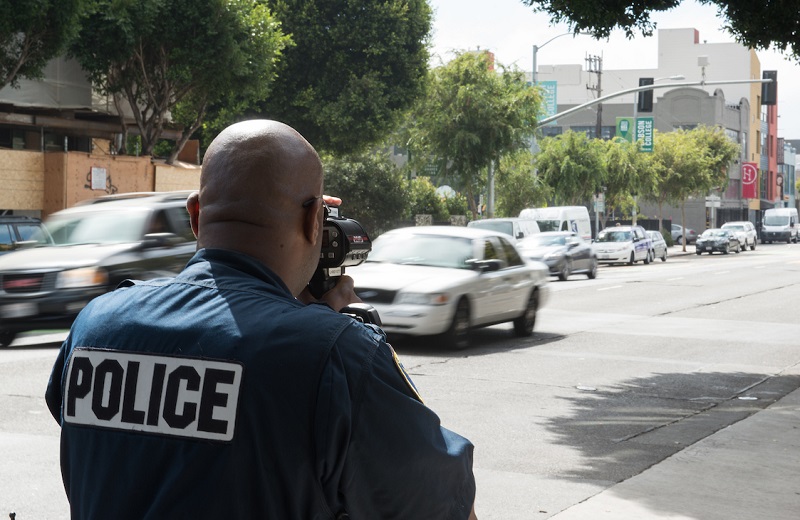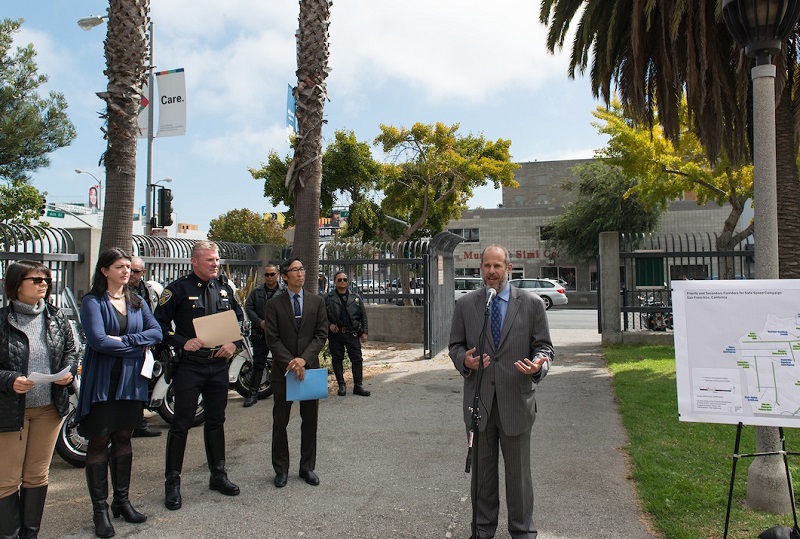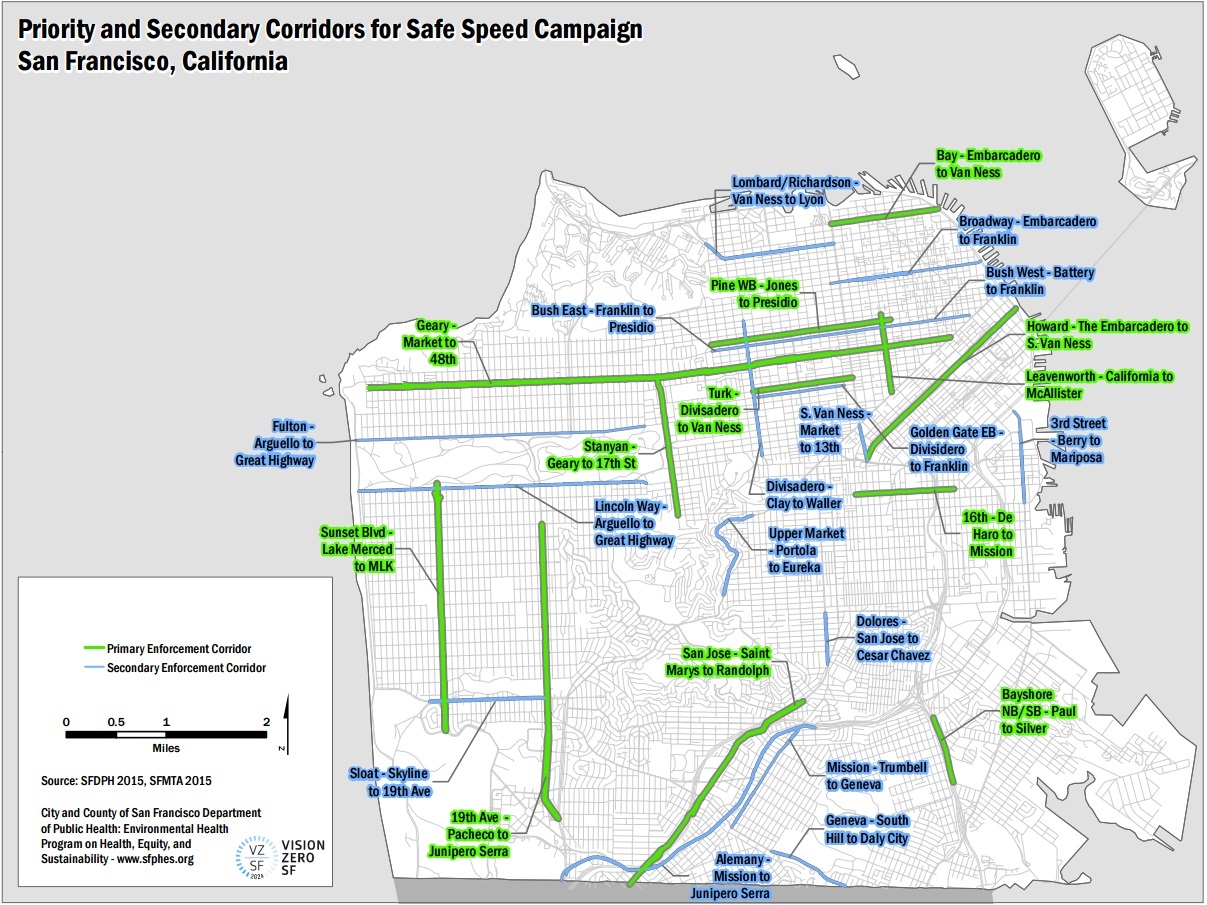
An SFPD officer uses a LIDAR device to measure driver speeds on Folsom Street in SoMa.
The next step in our city’s Safe Streets SF campaign starts in October with a new initiative to bring more strategic enforcement to curb speeding - and study its effectiveness - on San Francisco’s most speed-prone streets.
We announced the initiative at a press conference yesterday along with our partners at the San Francisco Police Department, the Department of Public Health, Supervisor Eric Mar and community advocates for safe streets.
“Achieving the city’s Vision Zero goal of eliminating traffic fatalities means taking proactive steps to stop deadly crashes from happening,” said Ed Reiskin, our director of transportation.

SFMTA Director of Transportation Ed Reiskin speaking at yesterday’s press conference.
The SFPD will focus its enforcement using data to pinpoint streets that see high rates of speeding and collisions with people biking and walking. These enforcement zones were identified by the SFMTA, the SFPD and a steering committee that included community advocacy groups.
The campaign will include a traffic enforcement surge of about 132 hours a week aimed at speeding violations. Its effects will be studied to add a new level of data and analysis about the role enforcement plays in deterring speeding in San Francisco.
It’s all part of the Safe Speeds SF campaign, which we launched last month with a series of radio ads to raise awareness about the dangers of speeding. The campaign was made possible by $2 million in federal grants, which the SFMTA secured through California’s Active Transportation Program.
“The Safe Speeds SF awareness campaign is about changing unsafe behavior,” said Reiskin. “With speed being one of the leading causes of traffic deaths in San Francisco, we need to use all the tools at our disposal to stop speeding, including targeted enforcement.”
Citations will be generated by LIDAR speed detection devices, which ensure that enforcement is focused on unsafe speeding -- not individuals. Thirty-two new LIDAR units were purchased for the initiative.
About 25 percent of the surge will be focused on 12 priority street corridors, with the remainder focused on 14 secondary corridors and other streets where speeding is a known issue.
Although a map of the streets (.PDF) targeted for the high-visibility speeding enforcement is publicly available, the exact timing and location of the enforcement will not be shared, to ensure the campaign can be effective.
“We’re making the targeted enforcement map public because the goal is not to write tickets, it’s to get drivers to slow down,” said Acting SFPD Chief Toney Chaplin. “Knowing where this enforcement push is happening should end dangerous driving behavior on these crash-prone streets. If drivers still choose to speed, our officers will certainly enforce the law.”
